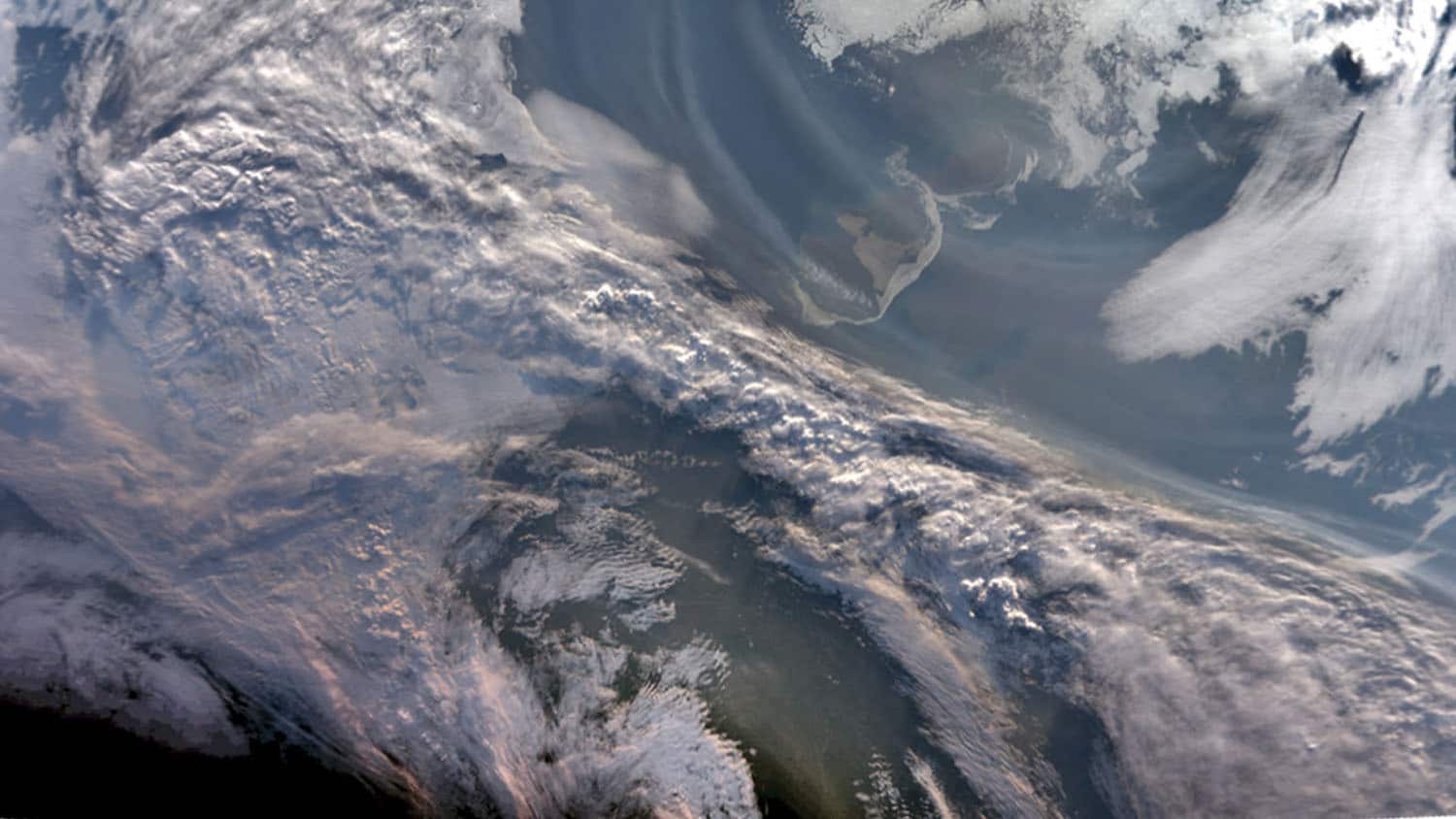Wildfire Smoke May Have Amplified Arctic Phytoplankton Bloom

For Immediate Release
Smoke from a Siberian wildfire may have transported enough nitrogen to parts of the Arctic Ocean to amplify a phytoplankton bloom, according to new research from North Carolina State University and the International Research Laboratory Takuvik (CNRS/Laval University) in Canada. The work sheds light on some potential ecological effects from Northern Hemisphere wildfires, particularly as these fires become larger, longer and more intense.
In the summer of 2014, satellite imagery detected a larger than normal algal bloom in the Laptev Sea, located in the Arctic Ocean approximately 850 kilometers (528 miles) south of the North Pole.
“For a bloom that large to occur, the area would need a substantial influx of new nitrogen supply, as the Arctic Ocean is nitrogen-depleted,” says Douglas Hamilton, assistant professor of marine, earth and atmospheric sciences at NC State and co-first author of a paper describing the work. Hamilton was formerly a research associate at Cornell University, where the research was conducted. “So we needed to figure out where that nitrogen was coming from.”
First, the researchers looked at the “usual suspects” for nitrogen input, such as sea ice melt, river discharge and ocean upwelling, but didn’t find anything that would account for the amount of nitrogen necessary for the bloom to occur.
But during that same time period, exceptionally large wildfires in Siberia, Russia, located directly upwind of the bloom, had burned approximately 1.5 million hectares (or about 3.5 million acres) of land.
So the researchers turned their attention to atmospheric composition. They used the Community Earth System Model (CESM), a computer model that can simulate what happens to emissions from natural and human sources as they enter and leave the atmosphere. The model was fed information about wind, temperature and atmospheric composition – including the composition of wildfire smoke – from the time period in question.
The model simulations showed that during late July and August of 2014 – when the bloom was detected and the Siberian wildfire was burning – nitrogen deposition from the atmosphere was almost double that of the preceding and following years.
“The wildfires were located in rapidly warming boreal regions, which have a lot of peat in the thawing permafrost,” Hamilton says. “Peat is very nitrogen rich and the smoke from the burning peat was hypothesized as the most likely source of much of the additional nitrogen.”
“We’ve known that fires can impact phytoplankton blooms, though it is unexpected to see something like this in the Arctic Ocean,” says Mathieu Ardyna, co-first author and CNRS researcher at the International Research Laboratory Takuvik (CNRS/Laval University). “Most likely, since fires are locality-specific and difficult to predict, blooms like this won’t be the norm – but when these wildfires do occur the nutrients they bring in could lead to sustained or multiple blooms.”
The researchers’ next steps could include reviewing the historical satellite record and further characterizing the chemical composition of the particles within the smoke to get a clearer picture of how wildfires like these might impact different ecosystems.
“A one-off bloom like this won’t change ecosystem structure, but both Siberia and high arctic Canada are getting more wildfires,” Hamilton says. “So it may be interesting to explore potential downstream effects if fire activity and nutrient supply remain high.”
The work appears in Communications Earth & Environment and was supported by the Department of Energy under grant number DE-SC0021302, the Alg-O-Nord research project of the CNES (Centre National d’Etudes Spatiales), High Impact Publications Program of ArcticNet and a European Union’s Horizon 2020 Marie Sklodowska-Curie grant (no. 746748).
-peake-
Note to editors: An abstract follows.
“Wildfire aerosol deposition likely amplified a summertime Arctic phytoplankton bloom”
DOI: 10.1038/s43247-022-00511-9
Authors: Mathieu Ardyna, Laval University, Stanford University and CNRS; Douglas S. Hamilton, North Carolina State University and Cornell University; Tristan Harmel, University of Toulouse; Léo Lacour, Julien Laliberté, Laval University; Diana N. Bernstein, University of Southern Mississippi; Chris Horvat, Brown University; Rémi Laxenaire, Florida State University and CNRS; Matthew Mills, Gert van Dijken, Kevin Robert Arrigo, Stanford University; Igor Polyakov, University of Alaska and Finnish Meterological Institute; Hervé Claustre, CNRS; Natalie Mahowald, Cornell University
Published: Sept. 19, 2022 in Communications Earth & Environment
Abstract:
In recent years, an increase in the frequency of wildfires has been observed in July and August in boreal forest and tundra ecosystems at a pan-Arctic scale. Although Northern Hemisphere wildfires are common, they are becoming particularly unusual by their increased latitude, duration, and intensity. Such extreme wildfire activity is correlated to the increased temperatures, dry conditions, and atmospheric disturbances (i.e., thunderstorms) associated with climate change. We report here a newly observed and unexpected consequence of high latitude wildfires; large phytoplankton blooms near the North Pole (up to 82°N in the eastern Eurasian Basin), induced by the northward transport and deposition of nutrients carried within wildfire aerosol smoke plumes. These Arctic surface waters, which are highly stratified and nitrogen-depleted with respect to phytoplankton requirements, received large amounts of wildfire-derived nitrogen in the summer of 2014 that relieved nutrient limitation and triggered an unusually large phytoplankton bloom. Such intensified climate-driven changes to natural biogeochemical cycles will need to be quantified and integrated into Arctic studies to account for their impacts on both nutrient and carbon cycles.
- Categories:


